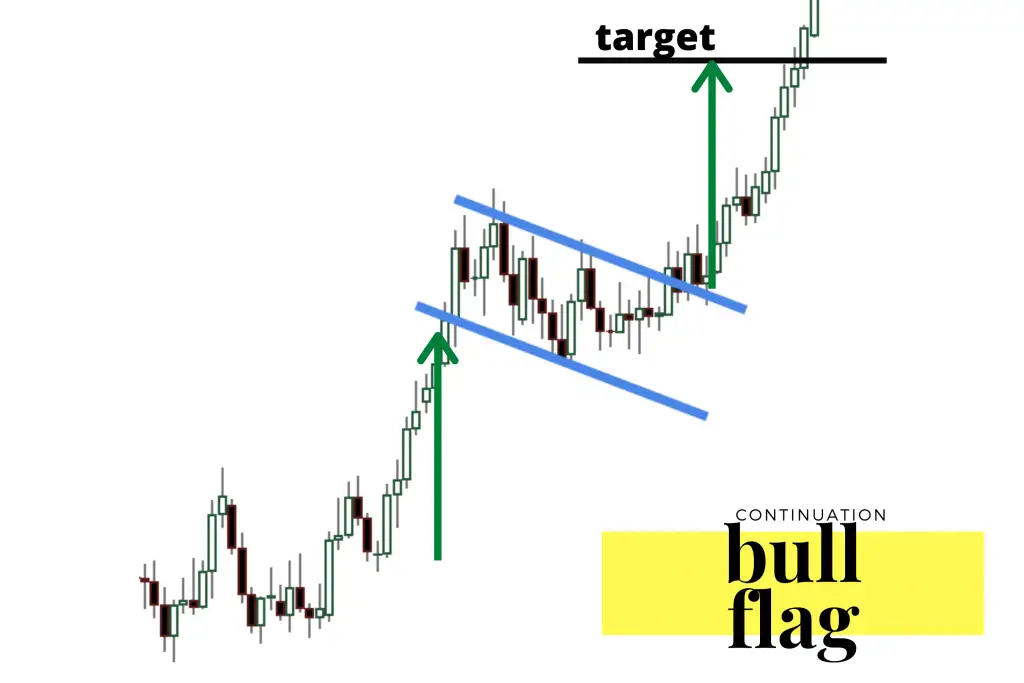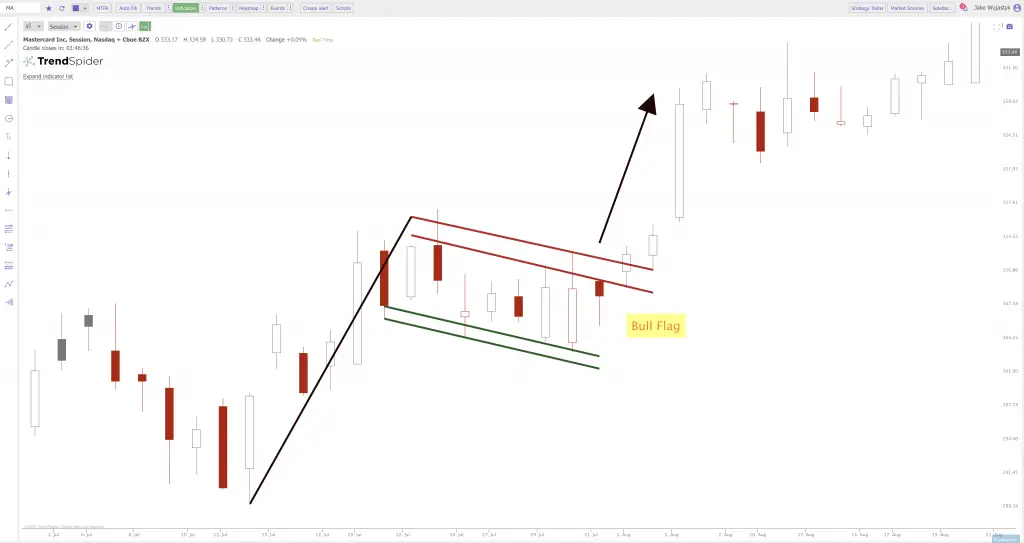This is a sample chapter from my book The Ultimate Guide to Chart Patterns.
Bull flag pattern chart facts:
- The bull flag is a continuation pattern of the previous uptrend.
- A bull flag chart pattern occurs after an uptrend out of a previous price base.
- The ‘pole’ is represented by the previous uptrend in price before a price consolidation.
- The ‘flag’ is a rectangular descending price range after the uptrend to new higher prices stops. The flag has primarily lower highs and lower lows.
- The signal of the end of the flag pattern and the beginning of a new potential uptrend is when the descending upper trend line is broken with a move upwards in price.
- This pattern is thought to be the consolidation of the uptrend.
- Traditionally the move out of the flag is thought to be potentially as big in magnitude as the uptrend before the flag begins.
- A breakout of the flag with higher than normal volume increases the chance of a continuation of the uptrend.
- A stop loss can be set at the lower trend line in the flag after entry.

The below Mastercard chart shows a bullish flag pattern where the uptrend begins near $288 and trends upward to $314 to create the ‘pole’ of the chart pattern. Then the uptrend stalls and created the ‘flag’ as a pullback into a descending range. Price broke out at $310 over the upper trend line in the flag and then moved in a continuation of the trend to almost $368. The pole was a $36 move from the low to the high before the flag. After the breakout price ran another $58. This is an example of a bull flag moving a greater distance from the flag breakout than it did leading up to the flag.

You can check out all the most popular chart patterns with my book The Ultimate Guide to Chart Patterns.